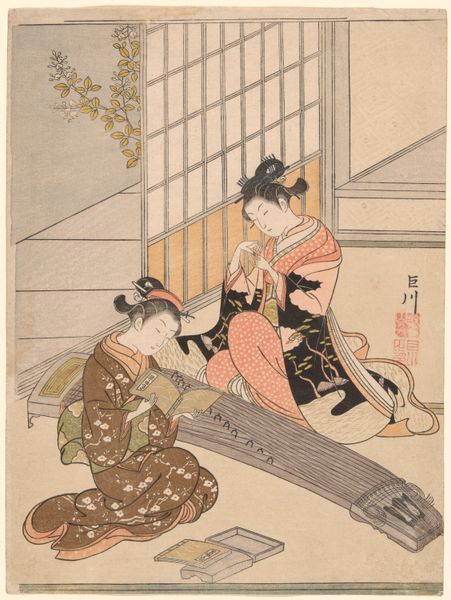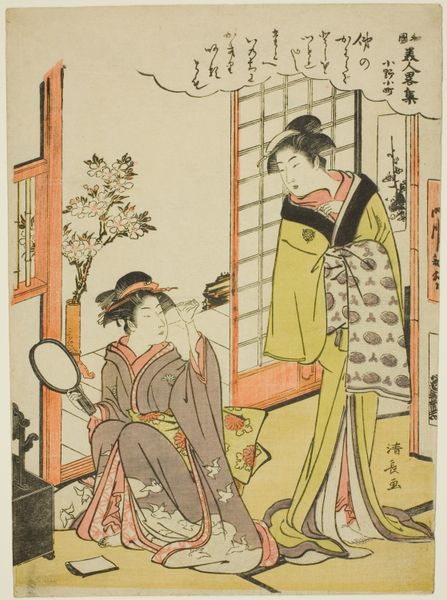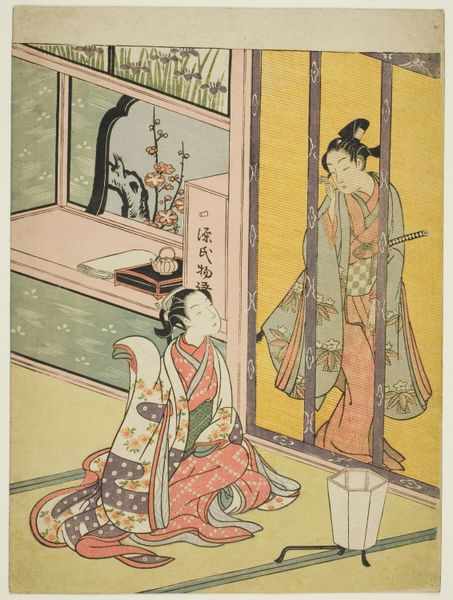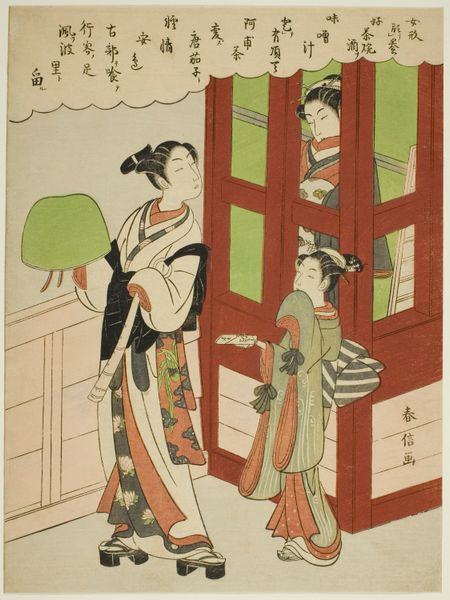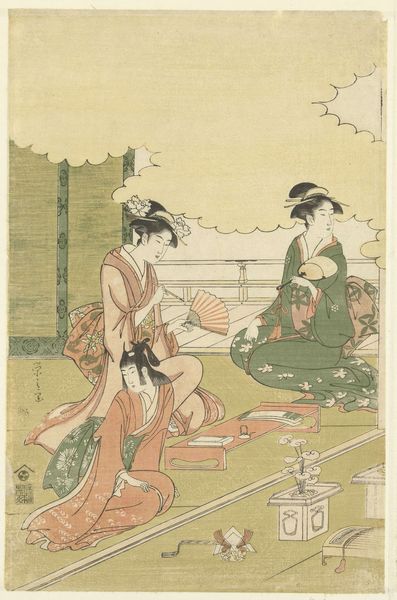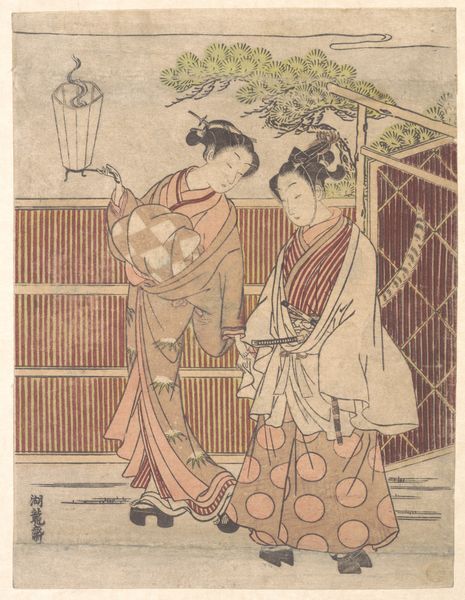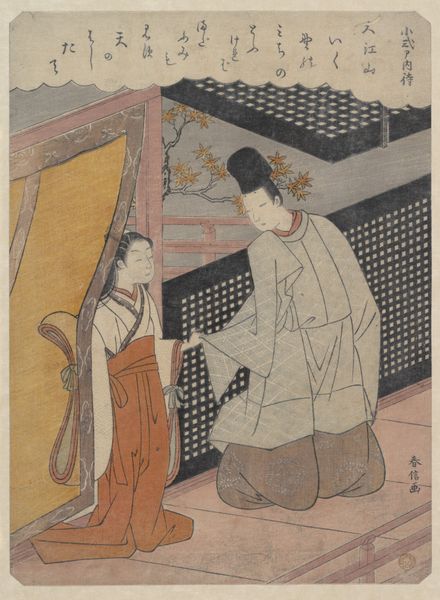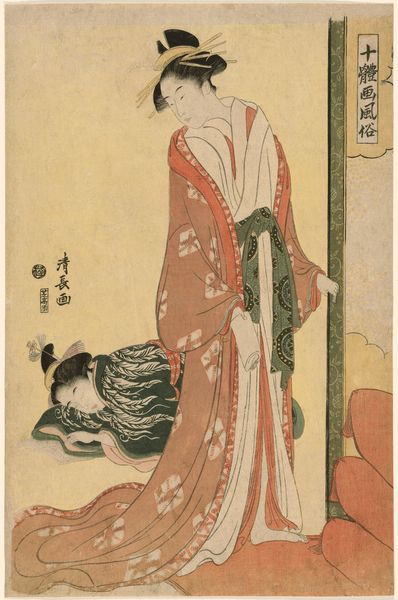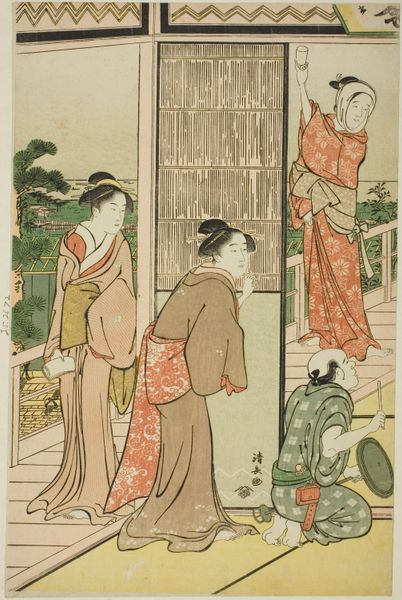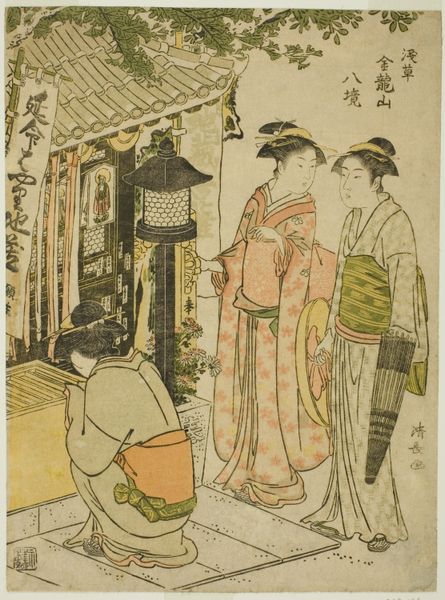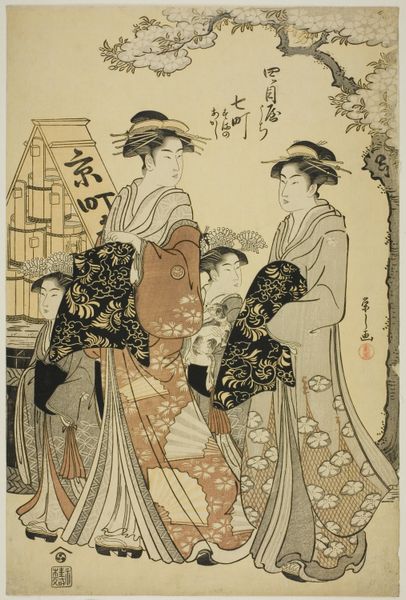
Scene on the Veranda of a Teahouse 18th - 19th century
0:00
0:00
print, woodblock-print
# print
#
asian-art
#
landscape
#
ukiyo-e
#
figuration
#
woodblock-print
#
genre-painting
#
calligraphy
Dimensions: 8 9/16 x 7 5/16 in. (21.7 x 18.6 cm)
Copyright: Public Domain
Editor: We're looking at "Scene on the Veranda of a Teahouse," an 18th or 19th century woodblock print by Yanagawa Shigenobu. The soft colors create a peaceful atmosphere, and it feels like a candid snapshot of everyday life. What stands out to you? Curator: This print really captures the essence of Ukiyo-e, "pictures of the floating world." But it's more than just a snapshot. Notice how the figures are positioned: the woman inside, holding a cloth, and the man gesturing towards figures in the distance, on the water perhaps? Editor: Yes, I see that. They're on a veranda of some kind, with people and what looks like boats behind them, fading into the background. What do you make of the setting? Curator: The teahouse itself is significant. In Edo-period Japan, these were places of leisure and entertainment. The print then captures the pleasure-seeking culture, but through a lens of refinement and fleeting beauty – the "floating world" aspect. Think of the ephemeral nature of the cherry blossoms or fleeting moments of connection, the unspoken narratives. What do you sense? Editor: It’s interesting you mention “unspoken narratives,” because it does seem like we are catching a brief moment between the two figures, a fleeting conversation. What does it mean, then, when placed in the wider cultural context of leisure and art? Curator: The presence of calligraphy, and a teahouse, were signs of cultural prestige. Consider how dress might have been employed to signal status and personality in such public scenes. These aren't merely pretty pictures, they're carefully constructed windows into a complex society. It reminds me of what art can be: visual memory passed through time. What will we make of this image 200 years from now? Editor: I never thought about it that way before, seeing a deeper cultural meaning behind seemingly simple scenes. It really makes you consider the artist's intention and the cultural values of the time. Curator: Precisely. By deciphering the visual language, we unlock layers of meaning that resonate even today.
Comments
No comments
Be the first to comment and join the conversation on the ultimate creative platform.
